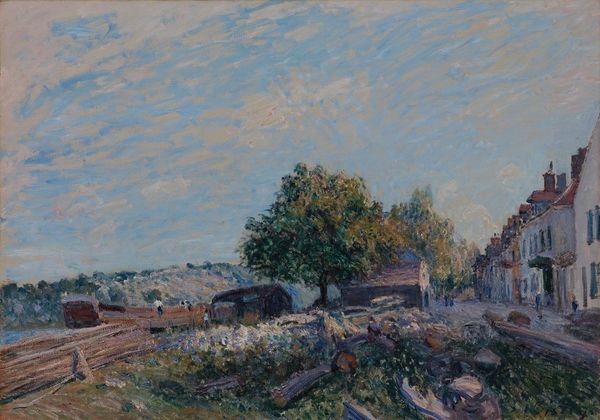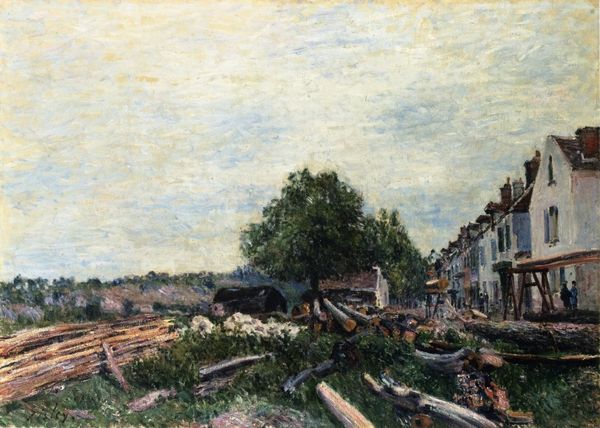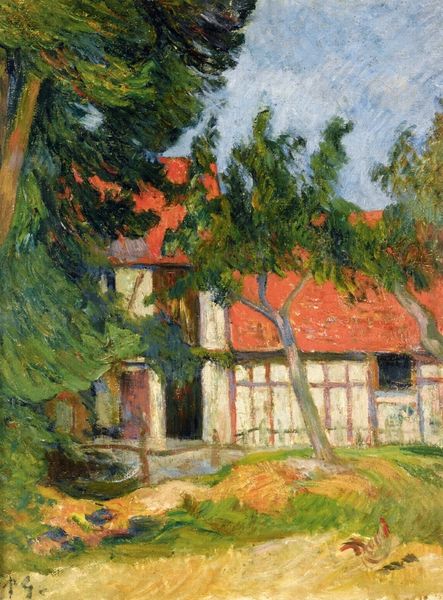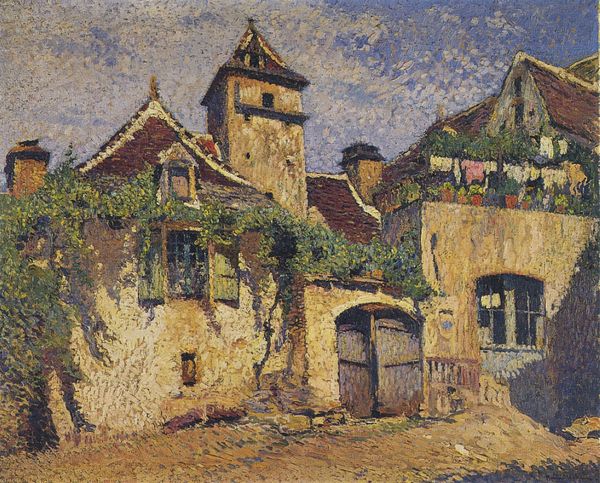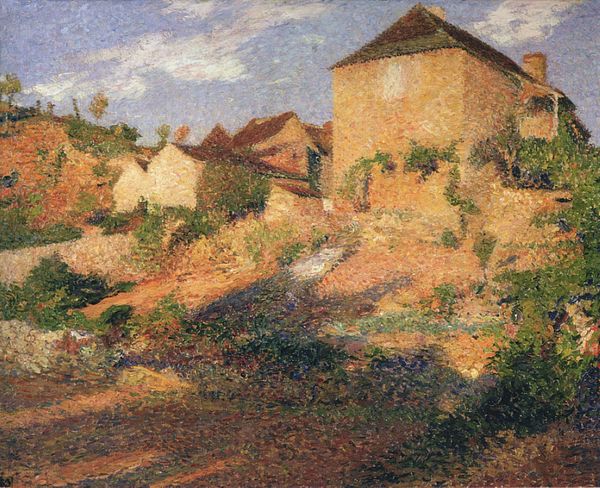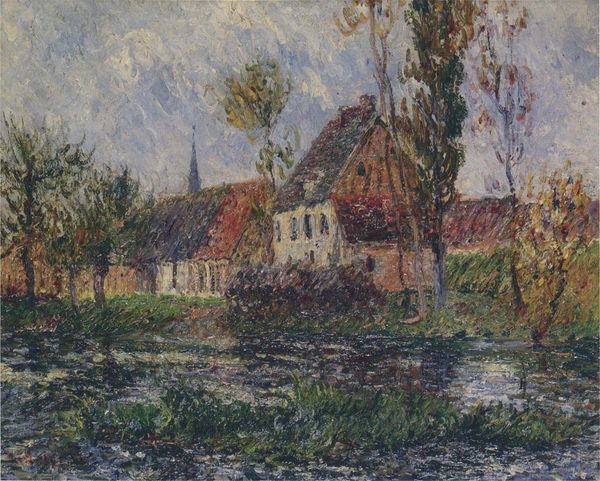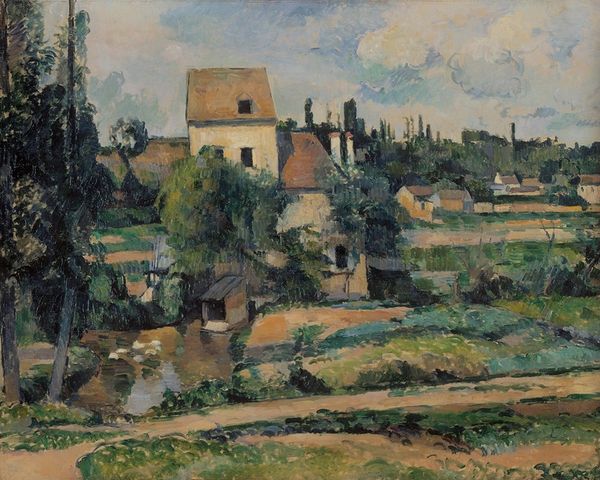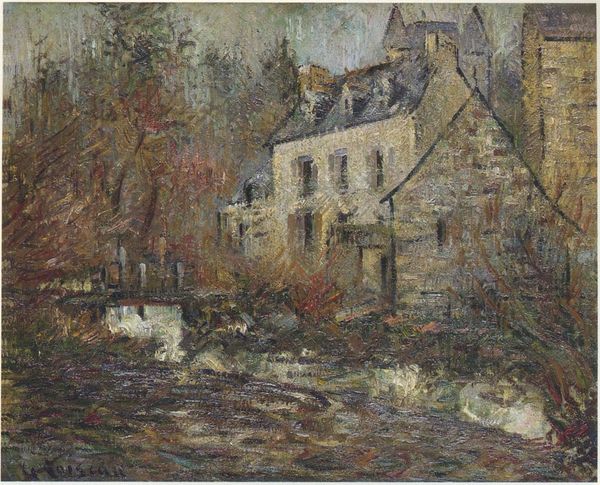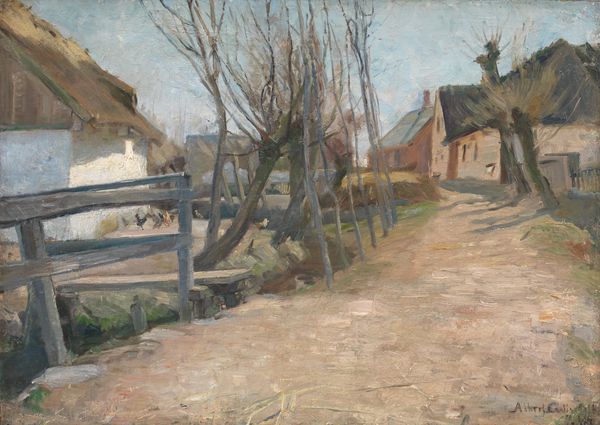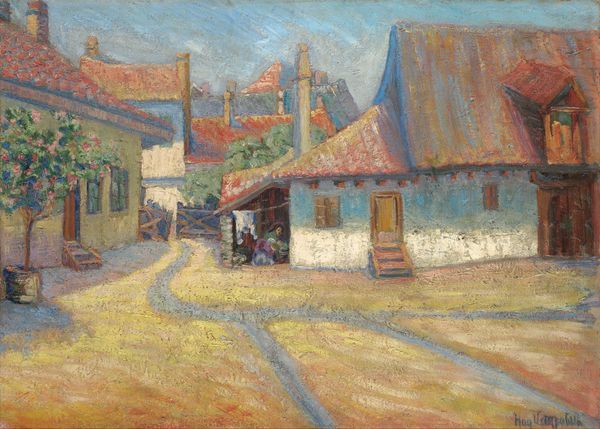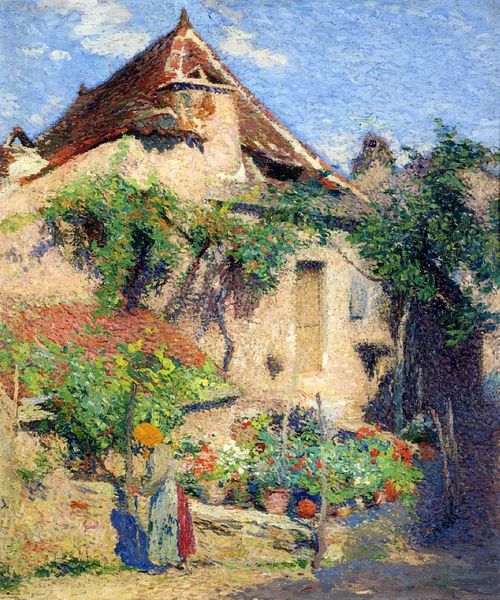
Dimensions: 59.3 x 79.8 cm
Copyright: Public Domain
Christian Rohlfs made this painting of a Village Street in Ehringsdorf near Weimar with oil on canvas. You can see his hand in every brushstroke. The thick application of paint is called impasto, and it gives the surface of the painting a tactile, almost sculptural quality. Rohlfs wasn't trying to create a smooth, illusionistic surface. Instead, he emphasized the materiality of the paint itself. Look at the roof of the building on the left: the dabs of color seem to mimic the rough texture of the thatch. Notice the way the light plays across the surface, catching the raised edges of the brushstrokes. This is not just a representation of a village; it's a record of the artist's physical engagement with his materials. Rohlfs lived and worked during a time of great social and economic change in Germany. By focusing on the everyday life of a small village, he seems to be turning away from the industrialized world and celebrating the traditions of rural life. The painting becomes a kind of meditation on the relationship between labor, materials, and the human experience. It reminds us that art is not just about ideas; it's also about the physical act of making.
Comments
No comments
Be the first to comment and join the conversation on the ultimate creative platform.
